Terracotta Warriors: All You Need to Know
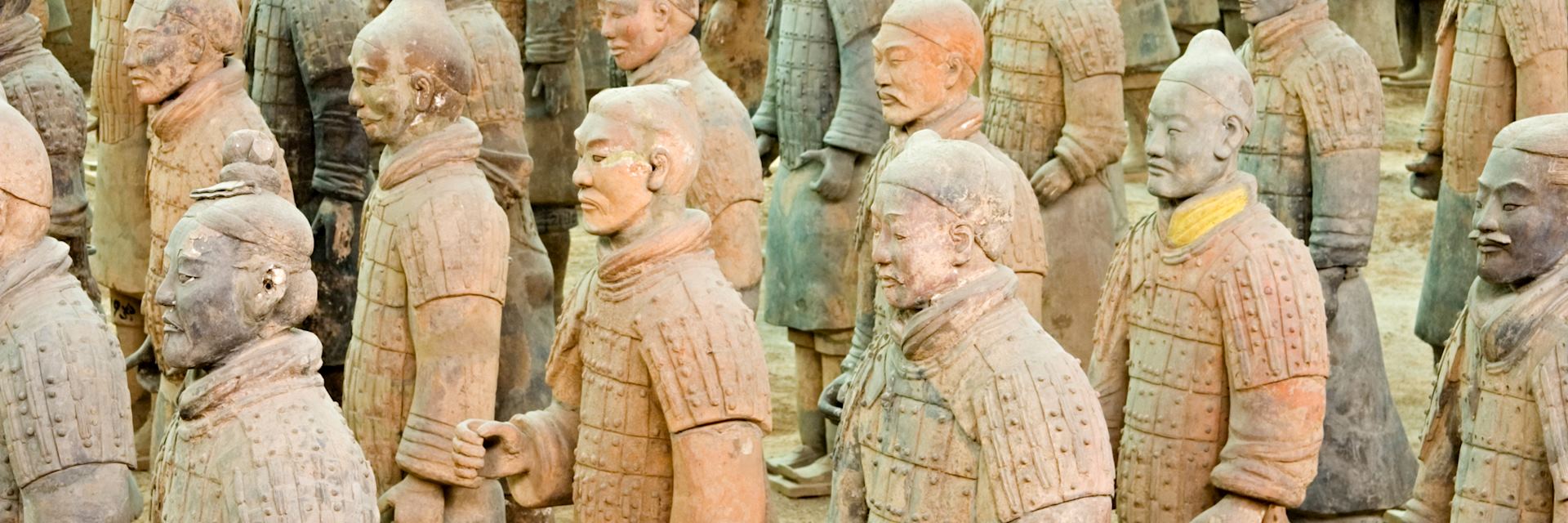
Introduction to the Terracotta Warriors
The Terracotta Warriors, also known as the Terracotta Army, is undoubtedly one of history's most remarkable archaeological discoveries. If you are interested in ancient civilizations and their legacies, you are in for a treat. This article will provide an overview of the Terracotta Warriors, explore their historical significance and discovery, and delve into why they continue to captivate people worldwide.
Overview of the Terracotta Warriors
The Terracotta Warriors are a collection of life-sized clay statues that depict the army of Qin Shi Huang, the first Emperor of China. This incredible archaeological find dates back to the late 3rd century BCE and is located in Xi'an in the Shaanxi Province of China. The statues were constructed to accompany Qin Shi Huang in the afterlife, serving as a powerful symbol of his rule and protecting him in the underworld.
The army consists of thousands of soldiers, horses, chariots, and even weapons, each unique in its appearance. These meticulously crafted statues showcase the remarkable skill and craftsmanship of the ancient Chinese artisans. Standing in formation, the Terracotta Warriors are an awe-inspiring sight, giving us a glimpse into the power and grandeur of the Qin Dynasty.
Historical Significance and Discovery
The discovery of the Terracotta Warriors in 1974 by a group of farmers was a game-changer in understanding the rich history of ancient China. During the excavation of a well, these farmers stumbled upon what turned out to be one of the most significant archaeological finds of the 20th century.
The Terracotta Warriors hold immense historical significance as they provide valuable insights into the military strategies, weapons, and attire of the Qin Dynasty. They also shed light on the advanced civilization that existed during that time, revealing the strength and might of the ancient Chinese empire. The discovery of the Terracotta Warriors has expanded our understanding of Chinese history and continues to intrigue experts and enthusiasts alike.
The Terracotta Warriors are a truly extraordinary testament to the ancient civilization of China. From the intricately crafted statues to their historical significance, they captivate people from all walks of life. If you ever have the opportunity, visiting the site in Xi'an should be on your bucket list, as it offers a unique and immersive experience that will leave you in awe of this fascinating historical wonder.
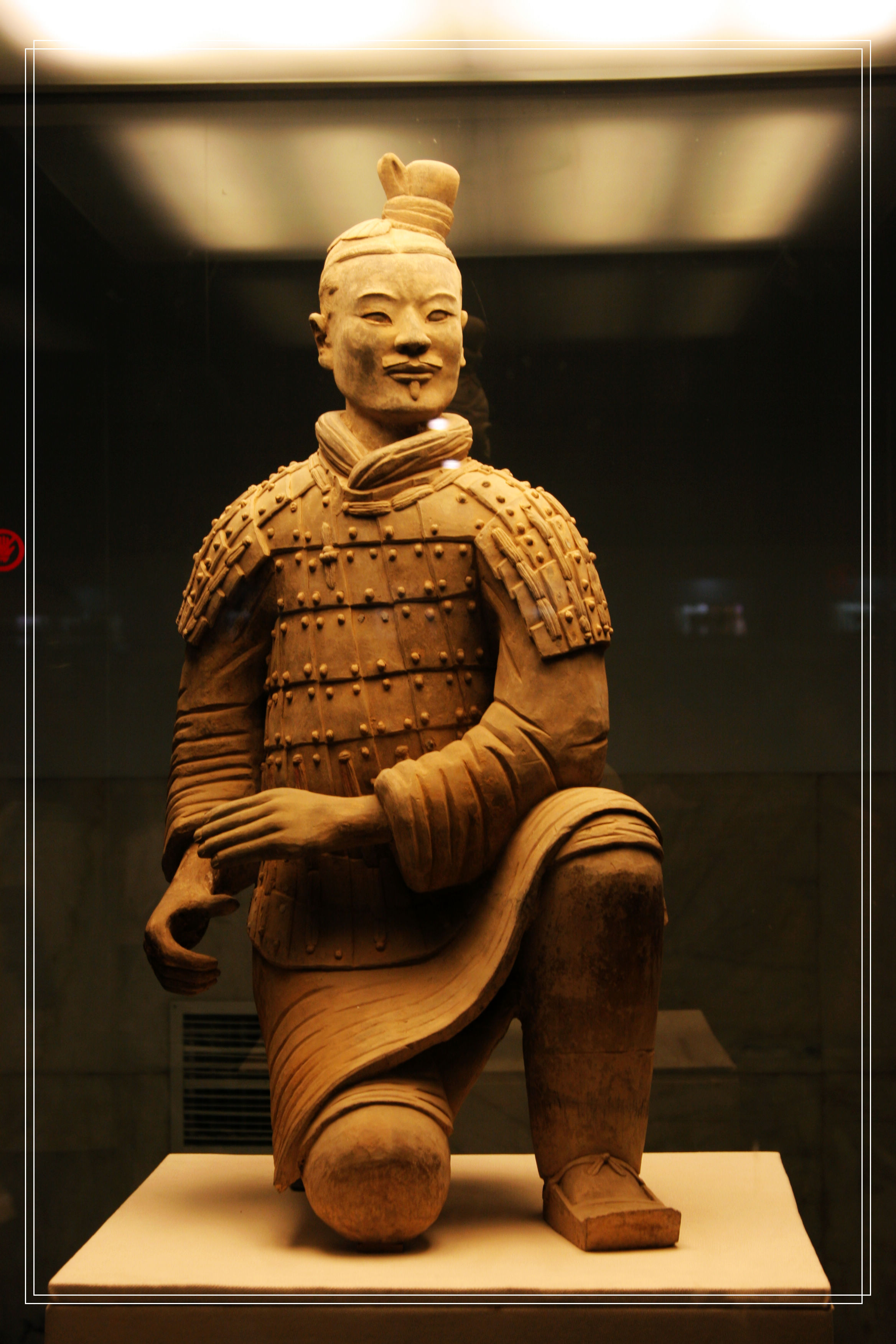
Emperor Qin Shi Huang and his Terracotta Army
Emperor Qin Shi Huang's reign and his legacy
Emperor Qin Shi Huang, also known as the First Emperor of China, was a visionary leader who played a pivotal role in shaping the history and culture of ancient China. His reign, which lasted from 221 BCE to 210 BCE, marked the unification of China and the beginning of the Qin Dynasty. As a ruler, Emperor Qin Shi Huang implemented various reforms, including the standardization of script, currency, and measurements, that laid the foundation for the unified Chinese empire we see today.
However, one of Emperor Qin Shi Huang's most enduring legacies is undoubtedly the Terracotta Army. This vast collection of life-sized clay statues was constructed to accompany him in the afterlife. These statues were believed to serve as his protectors and retainers in the underworld. This monumental display of power and grandeur showcases Emperor Qin Shi Huang's belief in continuing his rule beyond death.
Design and purpose of the Terracotta Army
The design of the Terracotta Army reflects the military might and organization of the Qin Dynasty. It consists of thousands of life-sized soldiers, cavalry, chariots, and even horses, each intricately crafted with unique facial features, hairstyles, and attire. The attention to detail in these statues is a testament to the remarkable skill and craftsmanship of the ancient Chinese artisans.
The purpose of the Terracotta Army was not only to honour and serve Emperor Qin Shi Huang in the afterlife but also to showcase his might and authority. These statues were strategically arranged in battle formations, ready to defend and protect him in the underworld. The presence of an entire army in the tomb was meant to symbolize the Emperor's power and reinforce the continuity of his rule beyond death.
Emperor Qin Shi Huang and his Terracotta Army are fascinating testaments to the ancient civilization of China. The Emperor's reign and his unification efforts shaped the course of Chinese history. At the same time, the design and purpose of the Terracotta Army reflect the military prowess and belief system of the Qin Dynasty. Visiting the site in Xi'an offers a unique opportunity to immerse yourself in this awe-inspiring historical wonder and gain a deeper understanding of ancient Chinese culture.
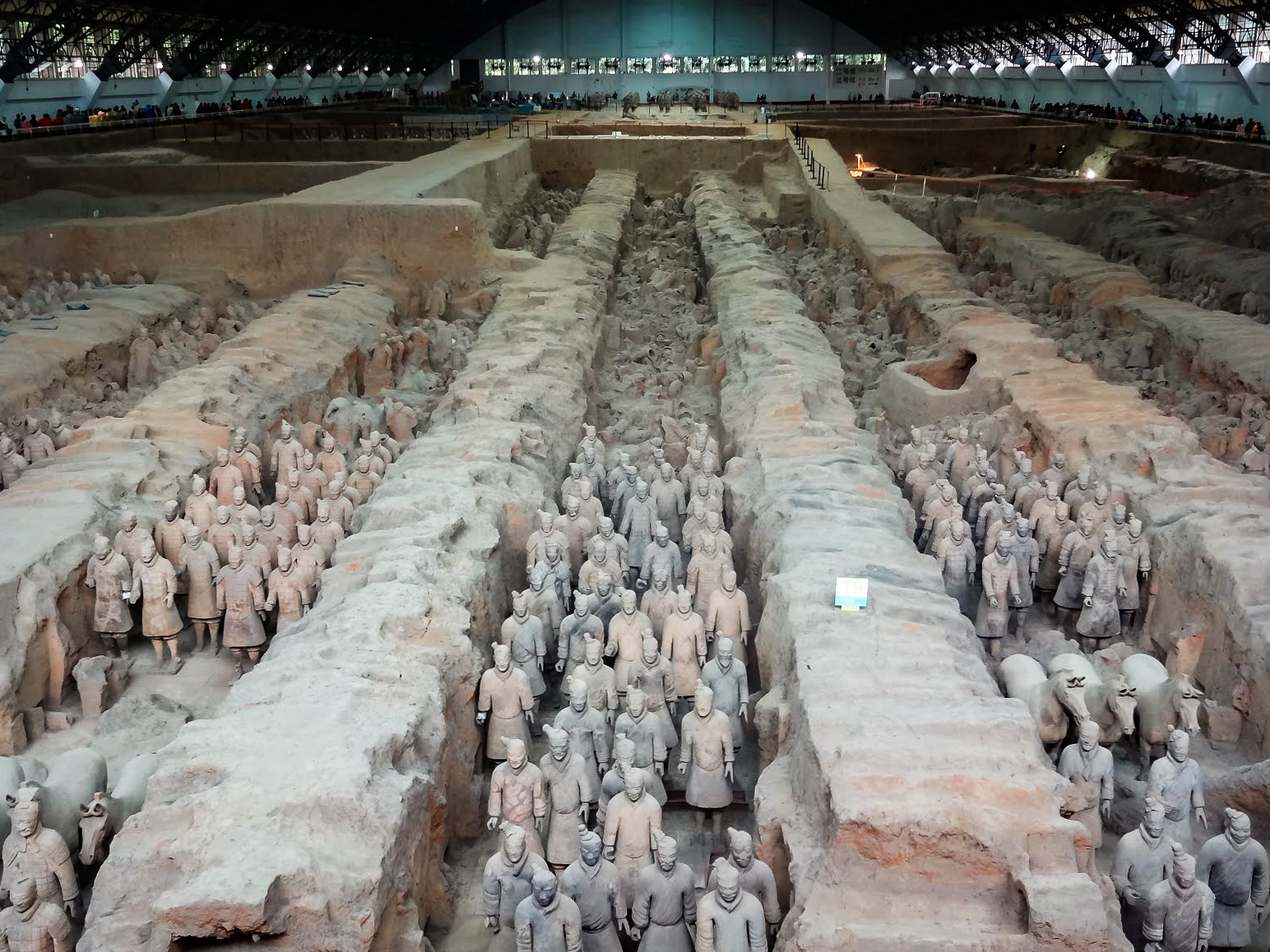
The Terracotta Army Site
If you're planning a trip to China or are interested in ancient history, the Terracotta Army site is a must-visit destination. Here, we'll take you through all the key details you need to know about this fascinating historical wonder.
Layout and structure of the site
The Terracotta Army is located in the city of Xi'an, in the Shaanxi province of China. It is housed in three pits, known as Pit 1, Pit 2, and Pit 3. The entire site covers an area of approximately 22,000 square meters and is a UNESCO World Heritage site.
Upon entering the site, you'll be captivated by the sheer magnitude of the Terracotta Army. It is estimated that over 8,000 life-sized statues, including soldiers, cavalry, and chariots, are meticulously placed in battle formations.
Different pits and their significance
Pit 1 is the largest and most impressive of the three pits. It contains the majority of the Terracotta Army and is believed to represent the main army of Emperor Qin Shi Huang. The warriors in this pit are arranged in a rectangular formation, with infantry in the front and chariots and cavalry positioned toward the back.
Pit 2 is smaller in size but equally fascinating. It is considered a command centre and contains a mix of infantry, chariots, and cavalry. This pit provides insight into the military organization and hierarchy of the Qin Dynasty.
Pit 3 is the smallest of the three pits and is believed to be the headquarters for high-ranking officers. It contains several high-ranking officers, officials, and a small number of infantry.
Each pit offers a unique glimpse into the grandeur and military might of the Qin Dynasty. The attention to detail in the statues, with unique facial features and hairstyles, is truly remarkable and serves as a testament to the skill of the ancient Chinese craftsmen.
The Terracotta Army site is an awe-inspiring historical wonder that offers a glimpse into the ancient civilization of China. The layout and structure of the site, along with the significance of each pit, provide a fascinating insight into the military prowess and belief system of the Qin Dynasty. A visit to this site is not only a chance to witness a remarkable archaeological find but also an opportunity to immerse yourself in ancient China's rich history and culture.
The Terracotta Warriors' Features and Details
One of the Terracotta Army's most intriguing aspects is each warrior's variety and uniqueness. These life-sized statues, which include soldiers, cavalry, and chariots, boast remarkable attention to detail that reflects the skilled craftsmanship of ancient Chinese artisans.
Variety and uniqueness of each warrior
Each warrior in the Terracotta Army is individually sculpted, resulting in a diverse array of facial features, body postures, and expressions. This attention to detail creates an awe-inspiring sense of individuality and realism. No two warriors are exactly alike, making each one a unique piece of art.
Clothing, weapons, and hairstyles
The warriors are dressed in intricately crafted armour and wear different types of clothing, depending on their rank and role in the army. Some wear full-body armour, while others sport lighter attire. This distinction reflects the hierarchy and organization of the Qin Dynasty's military.
The warriors' weapons are also highly detailed, with spears, swords, and crossbows in the arsenal. These weapons, made from bronze and iron, further emphasize the military might and preparedness of the Qin Dynasty.
The hairstyles of the warriors vary as well, with different styles indicating their rank and position within the army. Some have elaborate headdresses, while others have more simple and practical hairstyles. These hairstyles provide insight into the fashion and grooming trends of ancient China.
The Terracotta Warriors not only showcase the scale and grandeur of the Qin Dynasty's army but also demonstrate the remarkable craftsmanship and attention to detail of ancient Chinese artisans. The variety and uniqueness of each warrior, along with their clothing, weapons, and hairstyles, offer a fascinating glimpse into the individuality and organization of this ancient civilization. A visit to the Terracotta Army site is an opportunity to marvel at these extraordinary statues and immerse oneself in ancient China's rich history and culture.
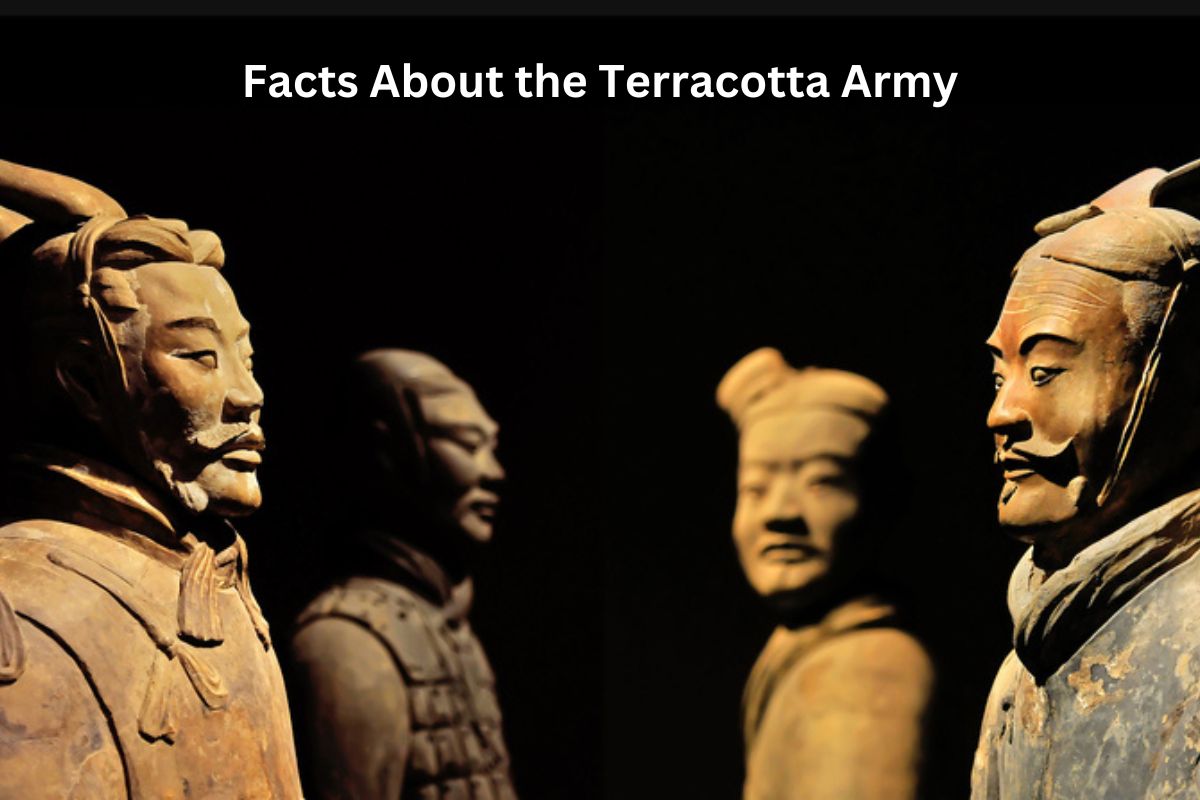
Preservation and Restoration Efforts
Several challenges need to be addressed when it comes to the preservation and restoration of the Terracotta Warriors. These magnificent ancient statues have been exposed to the elements for over two millennia, which has caused significant damage and deterioration. However, thanks to ongoing efforts, these priceless artefacts are being safeguarded for future generations to appreciate and admire.
Challenges in Preserving the Terracotta Warriors
One of the major challenges faced in preserving the Terracotta Warriors is the vulnerability of the statues to environmental factors. The exposure to moisture, temperature fluctuations, and pollutants in the air can cause deterioration and damage to the delicate clay surface. Additionally, the excavation process has contributed to the statues' fragility, as they were initially buried in a way that protected them from external influences.
Another challenge is the complexity of the preservation process due to the intricate details and unique features of each warrior. The craftsmen who created these statues invested tremendous time and skill into the sculpting process. Therefore, restoration efforts must be carried out with great precision and care to preserve the original integrity of these masterpieces.
Methods and Technologies Used for Restoration
To address these challenges, various advanced methods and technologies have been utilized to restore and preserve the Terracotta Warriors. These include:
-
Environmental Control: Specialized climate-controlled exhibition halls have been constructed to protect the statues from fluctuations in temperature and humidity. This helps minimise environmental factors' impact on the fragile clay surface.
-
Consolidation Techniques: Conservation experts have developed innovative methods to consolidate and strengthen the fragile clay material. This includes using adhesives and other substances to prevent further deterioration.
-
3D Imaging and Scanning: Advanced imaging and scanning technologies have been employed to create digital replicas of the statues. These replicas can be used for research, documentation, and even as a reference for restoration efforts.
-
Archaeological Excavation: Ongoing archaeological excavations at the site have helped to uncover new artefacts and gain insights into the construction and organization of the Terracotta Army. This information is crucial in guiding restoration efforts and understanding the historical significance of these statues.
The preservation and restoration of the Terracotta Warriors are of utmost importance to protect these remarkable ancient artefacts. By addressing the challenges posed by environmental factors and utilizing advanced restoration techniques, these priceless statues are being safeguarded for future generations to appreciate and learn from. The ongoing efforts to preserve the Terracotta Warriors ensure that their cultural and historical significance will continue to be cherished for years.
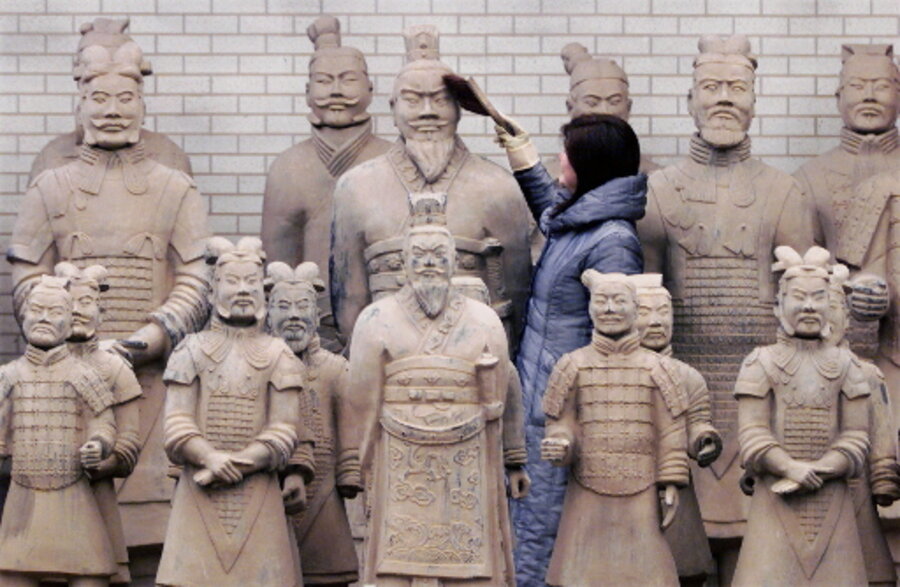
Impact and Influence of the Terracotta Warriors
Cultural impact within China and globally
The Terracotta Warriors, also known as the "Eighth Wonder of the World," hold immense cultural significance within China and garnered global recognition. These extraordinary statues, created to accompany Emperor Qin Shi Huang in the afterlife, represent an incredible feat of engineering and artwork. The discovery of the Terracotta Army in 1974 revolutionized the understanding of ancient Chinese history and brought the Qin Dynasty's rich cultural heritage to light.
Within China, the Terracotta Warriors have become a symbol of national pride and a testament to the country's rich historical legacy. They are considered a national treasure, and their iconic status attracts millions of Chinese tourists who take pride in experiencing this significant part of their heritage firsthand. The influence of the Terracotta Warriors extends beyond China's borders, with people from around the world being captivated by their incredible craftsmanship and historical significance.
Tourism and economic significance
The discovery of the Terracotta Warriors has had a transformative effect on tourism in the region. The site attracts millions of visitors each year, boosting the local economy and creating employment opportunities for the communities surrounding Xi'an. The popularity of the Terracotta Army has led to the development of infrastructure, such as hotels, restaurants, and transportation services, catering to the needs of tourists. The economic benefits derived from tourism have contributed to the region's overall development and improved the lives of the local population.
Furthermore, the global fascination with the Terracotta Warriors has also elevated the international profile of Xi'an and China. The statues have become iconic symbols of Chinese history, attracting tourists from all around the globe who want to witness this remarkable UNESCO World Heritage site firsthand. The economic impact of tourism extends to the entire country, as visitors often explore other cultural and historical sites in China, further contributing to the nation's economy.
The Terracotta Warriors have left a lasting impact on cultural and economic fronts. They symbolize national pride within China and have become an essential component of the country's identity. Globally, they have captivated the imagination of people from all walks of life and continue to attract millions of tourists, boosting local economies and increasing international recognition. The ongoing preservation and restoration efforts ensure that future generations can continue to appreciate and learn from these incredible ancient artefacts.
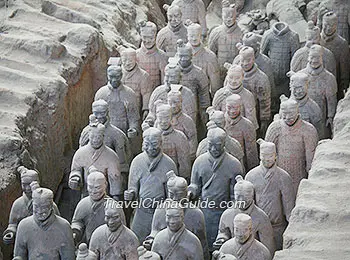
Lesser-known Facts about the Terracotta Warriors
Interesting trivia and lesser-known aspects
You may already be familiar with the awe-inspiring Terracotta Warriors and their cultural significance, but did you know there are some fascinating lesser-known facts about these remarkable statues? Here are a few interesting trivia and lesser-known aspects surrounding the Terracotta Warriors that will deepen your appreciation for their incredible craftsmanship and historical significance.
-
Variety of Faces: Each Terracotta Warrior has its unique facial features. No two faces are alike, showcasing each soldier's immense attention to detail and individuality.
-
Life-sized Army: The Terracotta Army comprises over 8,000 life-sized soldiers, 130 chariots, and 670 horses. It is estimated that thousands more soldiers are still yet to be uncovered.
-
Colourful Origins: Although the warriors are now seen as earthen-grey, they were originally painted in vivid colours. Over time, exposure to air caused the colours to fade.
-
Pit Structures: The Terracotta Warriors are divided into three pits, each housing different types of soldiers and arranged in battle formation. Pit 1 is the largest and most well-known, containing most of the army.
-
Archaeological Marvel: The discovery of the Terracotta Army was accidental when farmers digging a well stumbled upon the first statue in 1974. It is considered one of the greatest archaeological finds of the 20th century.
Myths and legends surrounding the warriors
The Terracotta Warriors have captured the world's imagination and given rise to various myths and legends. These stories add an element of mystery and intrigue to an already awe-inspiring historical site. Here are some intriguing myths and legends associated with the Terracotta Warriors:
-
Protective Spirits: According to legends, the Terracotta Warriors were imbued with spiritual powers to protect Emperor Qin Shi Huang in the afterlife. Some believe that the statues were infused with actual human souls.
-
Curse of the Emperor: It is said that disturbing the peace of the Terracotta Warriors can bring about bad luck and misfortune. Many visitors claim to have experienced strange occurrences or encountered supernatural phenomena after visiting the site.
-
Hidden Treasures: There are rumours that Emperor Qin Shi Huang's tomb contains vast treasures, including rivers of mercury and intricate miniature palaces. However, excavations are still ongoing, and the tomb remains largely unexplored.
-
Unseen Army: Some believe that a fourth pit, yet to be discovered, holds an even larger army of Terracotta Warriors. Excavations have provided enough evidence to support this theory, fueling anticipation for future discoveries.
As you explore the fascinating world of the Terracotta Warriors, keep these lesser-known facts, myths, and legends in mind. They add a layer of intrigue and mystery to an already remarkable historical site, making your visit all the more captivating and memorable.

Visiting the Terracotta Warriors
Tips for planning a trip to the site
Planning a visit to the Terracotta Warriors can be an exciting and enriching experience. Here are some tips to help you make the most out of your trip:
-
Research and Plan Ahead: Before visiting, take the time to research the history and significance of the Terracotta Warriors. This will enhance your understanding and appreciation of the site.
-
Choose the Right Time of Year: The Terracotta Warriors attract large crowds, so it's best to avoid peak seasons if possible. Consider visiting during the shoulder seasons of spring or autumn for a more relaxed and enjoyable experience.
-
Allocate Sufficient Time: The expansive site has three different pits to explore. Plan to spend at least half a day to appreciate the statues' intricate details and historical significance fully.
-
Wear Comfortable Shoes: There is quite a bit of walking involved, so it's essential to wear comfortable shoes to explore the site comfortably.
-
Stay Hydrated and Bring Snacks: The site can be quite extensive, so it's advisable to bring water and some light snacks to keep yourself energized and hydrated throughout your visit.
-
Be Respectful: The Terracotta Warriors are a UNESCO World Heritage site, and it's important to respect the site's historical significance and cultural importance. Follow the rules and regulations and avoid touching or climbing on the statues.
Guided tours and recommended timings
Consider joining a guided tour to make the most of your visit to the Terracotta Warriors. A knowledgeable guide can provide valuable insights and stories about the site, enhancing your overall experience.
The best time to visit the Terracotta Warriors is early morning or afternoon when the crowds are smaller. This allows you to explore the site at a more leisurely pace and avoid the peak hours.
A recommended itinerary for a guided tour would typically include visits to all three pits, starting with the largest and most well-known Pit 1, where most of the army is located. The guide will provide historical context and highlight interesting details as you navigate the site.
Remember to allocate ample time for each pit and the museum, which houses various artefacts and displays related to the Terracotta Warriors.
Planning a trip to the Terracotta Warriors requires research and preparation, but the experience is well worth it. By following these tips and considering a guided tour, you can fully immerse yourself in the awe-inspiring world of these incredible historical treasures.
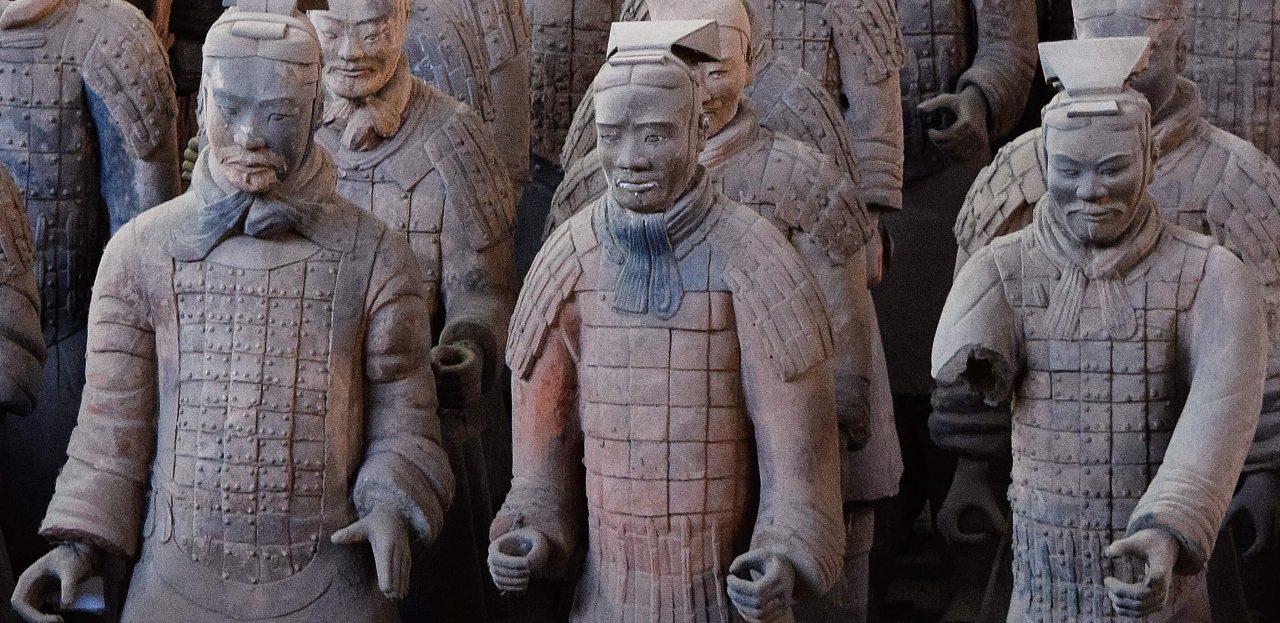
Frequently Asked Questions
Common queries and answers about the Terracotta Warriors
Visiting the Terracotta Warriors is a once-in-a-lifetime experience that glimpses ancient Chinese history. To help you plan your trip and make the most out of your visit, here are answers to some common questions:
What are the Terracotta Warriors?
The Terracotta Warriors are a collection of life-sized statues depicting the armies of Emperor Qin Shi Huang, the first emperor of China. These statues were created over 2,000 years ago and were meant to protect the emperor in the afterlife.
Where are the Terracotta Warriors located?
The Terracotta Warriors are located near Xi'an in the Shaanxi province of China. The site is part of Emperor Qin Shi Huang's Mausoleum Site Park, including the emperor's tomb and other historical artefacts.
How many statues are there?
There are currently three main pits at the Terracotta Warriors site, each containing different types of statues. Pit 1 is the largest and contains most of the army, with over 6,000 statues. Pits 2 and 3 are smaller and house other types of warriors, as well as chariots and horses.
Can you touch the statues?
No, touching the statues is strictly prohibited. The statues are delicate and can be easily damaged. It's important to respect the site's historical significance and cultural importance by following the rules and regulations.
Is it recommended to join a guided tour?
Joining a guided tour is highly recommended as it provides valuable insights and stories about the Terracotta Warriors. A knowledgeable guide can enhance your overall experience by providing historical context and highlighting interesting details during your visit.
Remember to plan your visit during the quieter times, such as early morning or late afternoon, to avoid the crowds. Allocate sufficient time to explore each pit and the museum, as there is much to see and learn about these incredible historical treasures.
By following these tips and having your questions answered, you can make the most out of your trip to the Terracotta Warriors and create memories that will last a lifetime.
